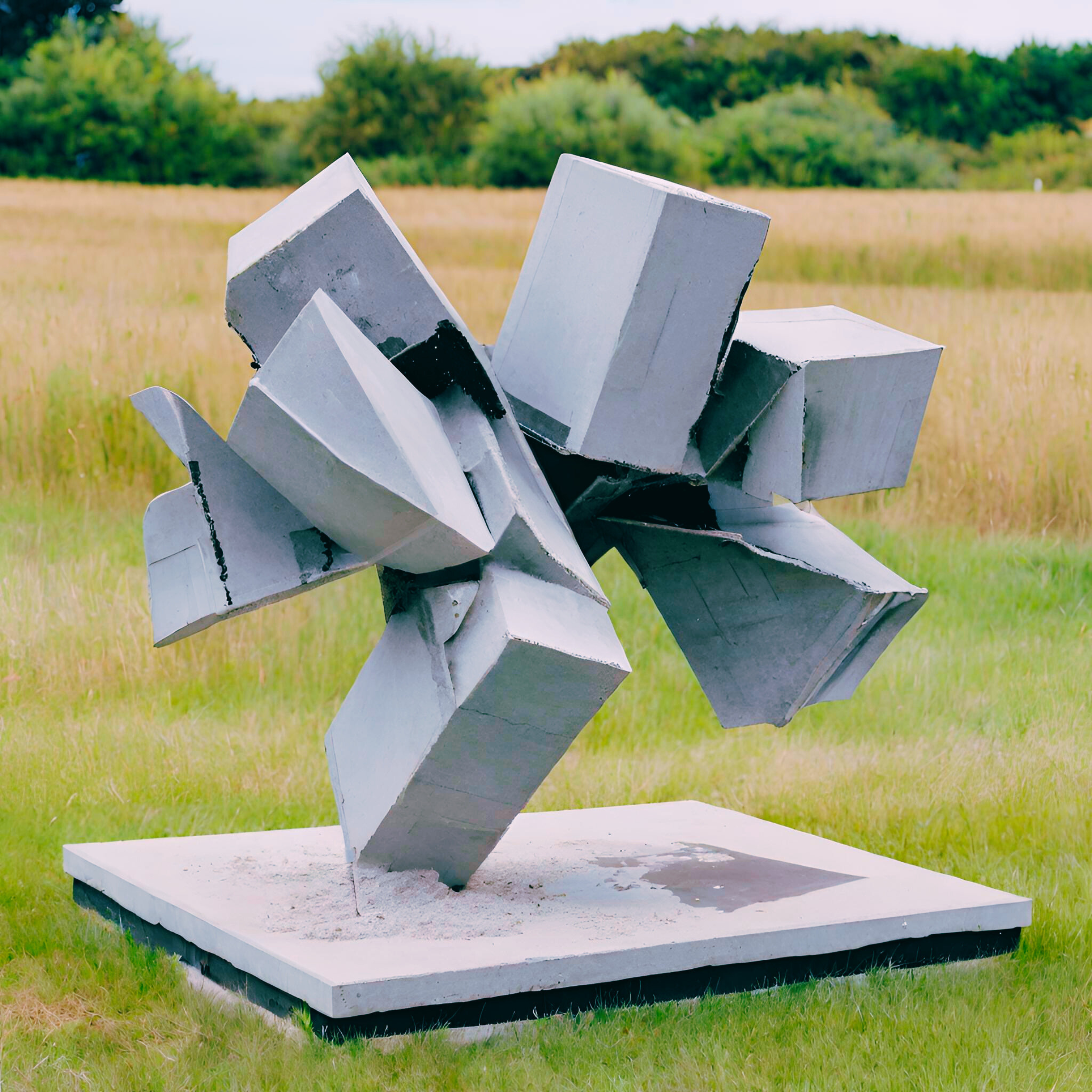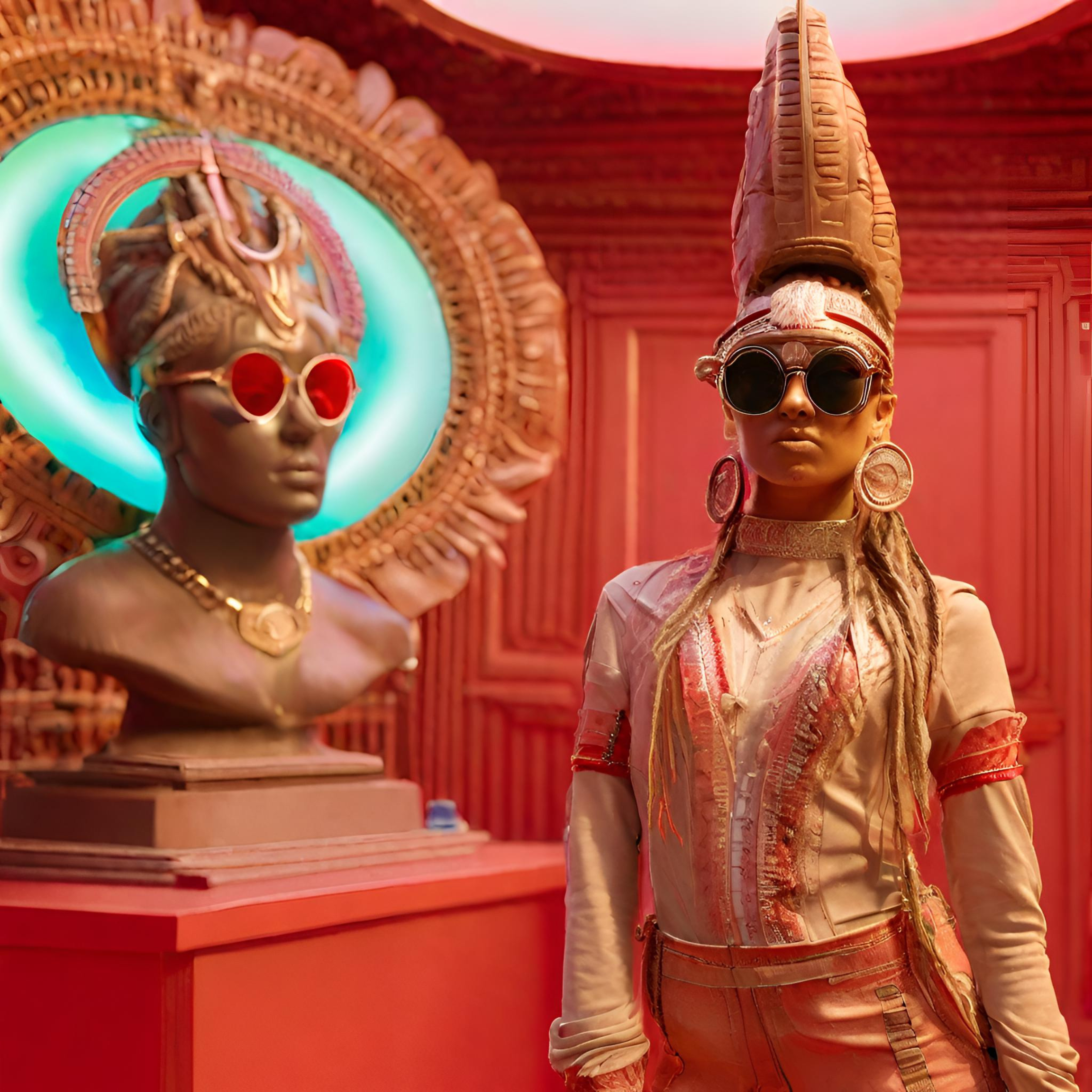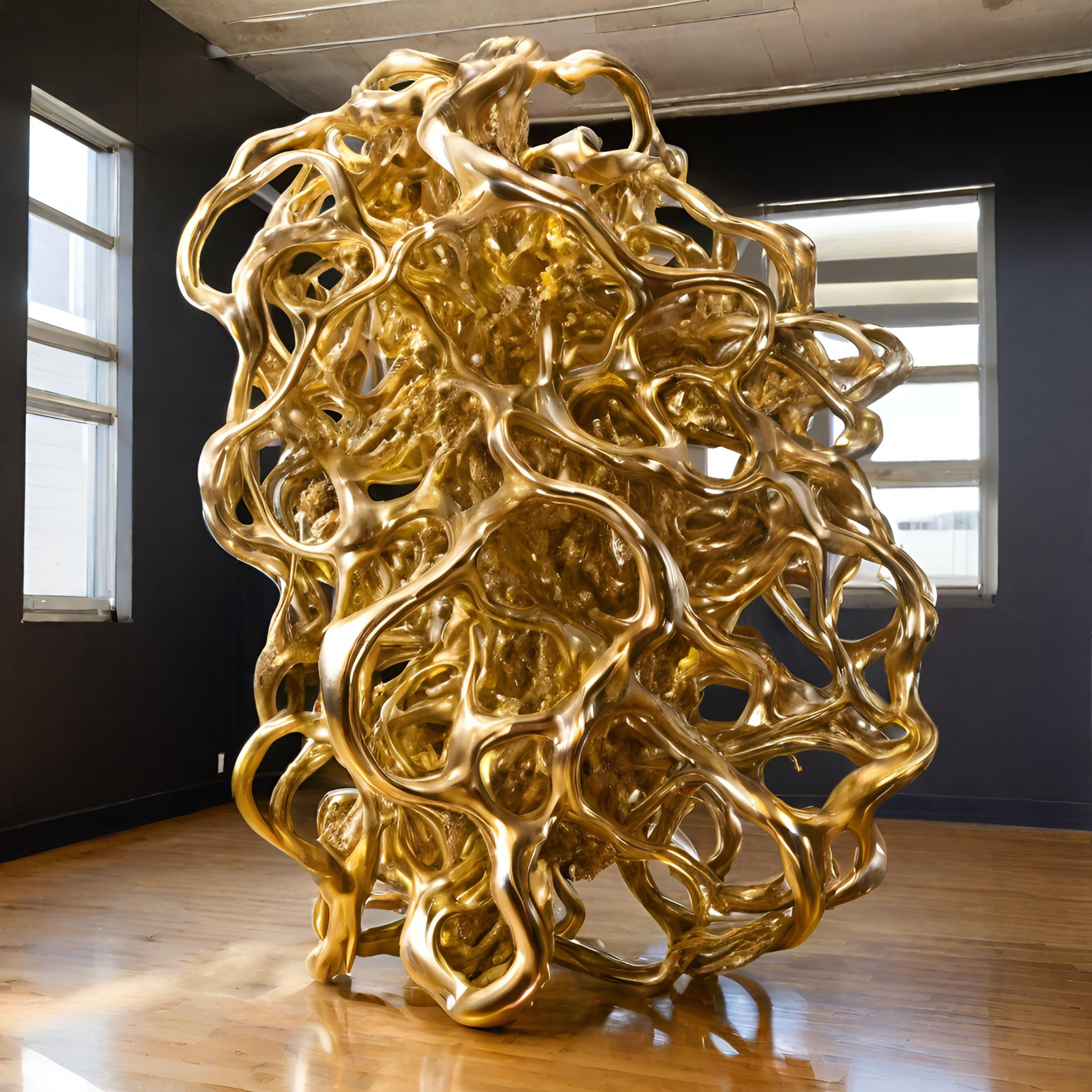Sculpture
Biomorphism and the Glee of Organic Shapes
Sculpture that Explores Designs of Nature
Rejecting rigid structures, opting for the irregular, fluid, flowing forms that mimic natural patterns, this genre is a rebellion against a mechanized world's sterile aesthetics.
Biomorphism and the Glee of Organic Shapes
Sculpture that explores designs of nature
Rejecting rigid structures, opting for the irregular, fluid, flowing forms that mimic natural patterns, this genre is a rebellion against a mechanized world's sterile aesthetics. Celebrating the beauty found in asymmetry and unpredictability, these sculptures often reflect the complexity observed in living organisms, plants, and other natural elements.
Biomorphic and organic sculptures contribute to the broader conversation in contemporary art by exploring the intersection of nature, technology, and human creativity. The biomorphic style has been influential across various art forms, including painting, sculpture, architecture, and design. It has appeared in different art movements throughout the 20th century including in Surrealism and Abstract Expressionism.
WHAT IS BIOMORPHISM?
The term is derived from the combination of "bio" meaning life, and "morphism," meaning form or shape. In biomorphic art, artists emulate and abstract natural elements, creating works that often resemble living organisms, plants, and other organic structures.
Here are some key aspects of this artistic approach:
Artists draw inspiration from the patterns, textures, and structures observed in living organisms, such as plants, animals, and even microscopic life. Biomorphic art features fluid, flowing, and curvilinear shapes that mimic the organic forms found in nature. Artists often prioritize smooth lines and dynamic curves over rigid, geometric shapes, paying attention to the details and nuances found in biological structures, creating pieces that evoke a sense of movement and vitality.
Biomorphism often contains a sense of sensuality and emotion. The use of organic forms can create a response in viewers, connecting them to the natural world on an aesthetic and visceral level and have an innate ability to tap into feelings of familiarity, comfort, or even intrigue.
Biomorphism often emphasizes growth, transformation, change and decay. Sculptures may convey a sense of organic development, as if the forms are evolving or growing over time.
While biomorphic and organic sculptures are inspired by nature, artists bring an element of abstraction to their work. They interpret natural shapes, allowing for a more subjective and artistic expression rather than a literal representation of the observed elements. While the art is inspired by natural forms, it is not a strict imitation of reality. The goal is to capture the essence and spirit of nature rather than replicate specific objects.
Artists may use various materials such as metal, wood, stone, or even more unconventional materials to mimic the textures and patterns found in nature. This can include traditional sculpting methods as well as more contemporary approaches, which may integrate modern technologies and materials, such as 3D printing or digital design tools.
WHICH NATURAL FORMS DO ARTISTS EMULATE?
Artists who work with biomorphic and organic forms draw inspiration from a wide range of natural elements.
Plant Life:
Sculptures might mimic the graceful curves of vines, the intricate patterns of leaves, or the organic shapes of flowers. Artists could use materials such as metal or ceramics to capture the flowing and delicate nature of plant life.
Seashells and Marine Life:
Some sculptures may take cues from the patterns and textures found in seashells, coral formations, or the fluid movements of marine creatures. The resulting artworks convey a sense of underwater beauty and elegance.
Human and Animal Anatomy:
Artists might explore the organic forms found in the human body or various animal anatomies. This can involve abstract representations of muscles, bones, or other biological structures, creating sculptures that evoke a sense of vitality and life.
Microscopic Organisms:
Sculptors might find inspiration in the microscopic world, creating forms that resemble microorganisms, cells, or biological patterns observed through a microscope. These artworks can blur the line between the visible and invisible aspects of nature.
Rock and Geological Formations:
Some artists focus on the rugged and textured forms found in rocks, cliffs, and geological formations. Sculptures may capture the essence of erosion, weathering, or the geological forces that shape the Earth's surface.
Weather and Atmospheric Phenomena:
The dynamic and ever-changing nature of weather, clouds, and atmospheric patterns can inspire sculptures that convey a sense of movement and fluidity. Artists might use materials that capture the ethereal qualities of these natural phenomena.
Trees and Branches:
The branching and interconnected forms of trees and their branches can be a rich source of inspiration. Artists may create sculptures that explore the unity and diversity found in these organic structures.
Fungi and Microbial Life:
Sculptures might draw inspiration from the diverse shapes and structures of fungi or microbial life. The intricate and sometimes otherworldly forms of these organisms can be translated into visually captivating artworks.
Artists working with biomorphic and organic forms often blend elements from multiple natural sources. The goal is not strict realism but rather the capture of the essence, movement, and beauty inherent in the natural world. Artists use their sculptural language to express their unique vision and perspective of these organic forms.
BIOMORPHISM AS A RESPONSE
Biomorphism in art often emerges as a response to various cultural, social, and artistic movements. While it may not be a direct reaction to a specific opposite, it does reflect a departure from certain trends prevalent in art and society. Here are some insights into what biomorphism might be responding to:
Industrialization and Modernization:
During periods of rapid industrialization and technological advancements, biomorphic art can be seen as a response to the increasing mechanization of society.
It represents a desire to reconnect with the organic and natural world, offering a counterbalance to the cold and geometric aesthetic often associated with industrial design.
Geometric Abstraction and Formalism:
Biomorphism contrasts with geometric abstraction and formalism, prevalent in certain art movements. While geometric forms and strict formal structures dominated certain periods, biomorphic art rebels against the rigid constraints, embracing the fluidity and irregularity of organic shapes.
Post-War Trauma and Surrealism:
In the aftermath of World War II, biomorphic elements found expression in art as a response to the trauma and dislocation experienced by societies. Surrealist artists, influenced by psychoanalytic theories, turned to biomorphic forms to tap into the subconscious and explore the emotional and psychological dimensions of human experience.
Nature as Sanctuary:
In urbanized and industrialized environments, biomorphic sculptures can be seen as a response to the increasing disconnect from nature. Artists may use biomorphism to create a sanctuary, offering viewers a visual escape into the beauty and harmony of the natural world.
Expressing Vitality and Life:
Biomorphism can be a response to the perceived lifelessness and sterility of certain artistic movements. By infusing sculptures with organic shapes and dynamic forms, artists aim to convey a sense of vitality, energy, and the pulsating rhythms of life.
Rejection of Minimalism:
In contrast to the minimalist movement, which often favors simplicity and austerity, biomorphic art embraces complexity and richness. It responds to the call for more expressive and emotionally charged forms of artistic expression.
Biomorphism provides an alternative perspective to prevailing artistic and societal trends. It serves as a means of exploring and celebrating the diversity, beauty, and complexity of the natural world in the face of industrialization, formalism, and other influences.

























